- Home
- slideshows
- miscellaneous
- The cheapest private jet in the world can now land itself with the push of a button. We tested the revolutionary new emergency system.
The cheapest private jet in the world can now land itself with the push of a button. We tested the revolutionary new emergency system.
Meet the Cirrus Vision Jet.

It may be small, but it's mighty for what it is: a single-engine personal jet. Pretty much a minivan in the sky.
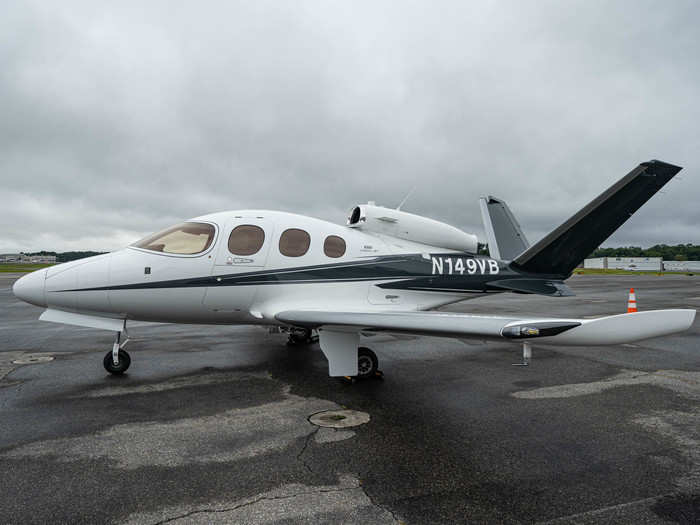
The minivan analogy is actually pretty accurate, once you get inside. There are two pilot's seats (one can be used for a passenger)...
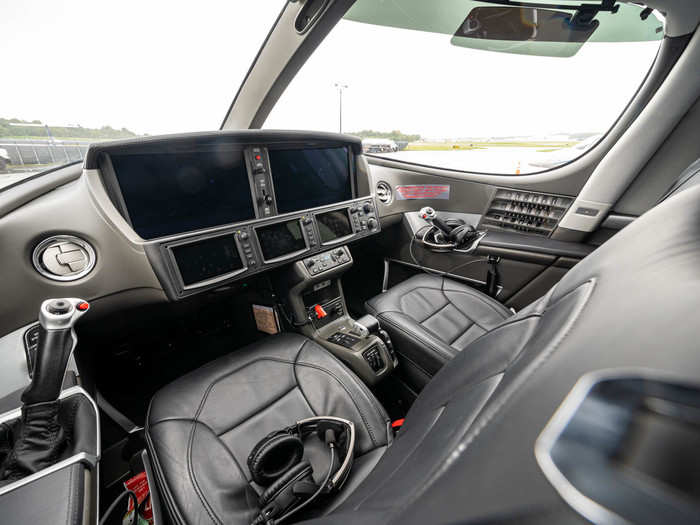
... And right behind that, two bucket seats.
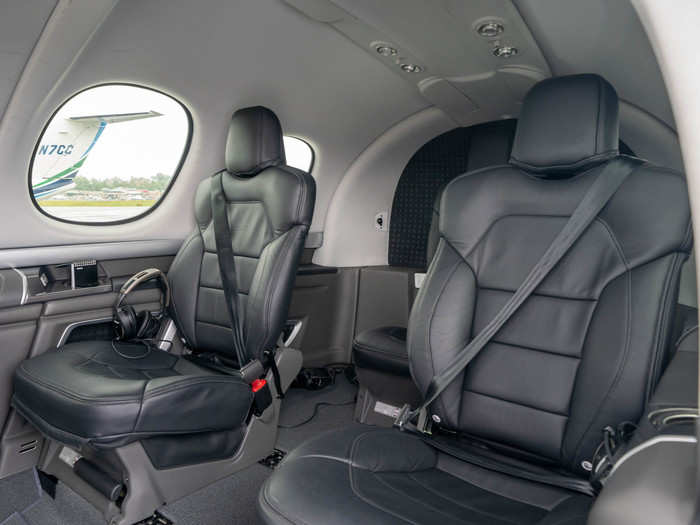
Behind those, there is room for up to three more seats, depending on the configuration you choose. In this particular case there was only one seat in the back.
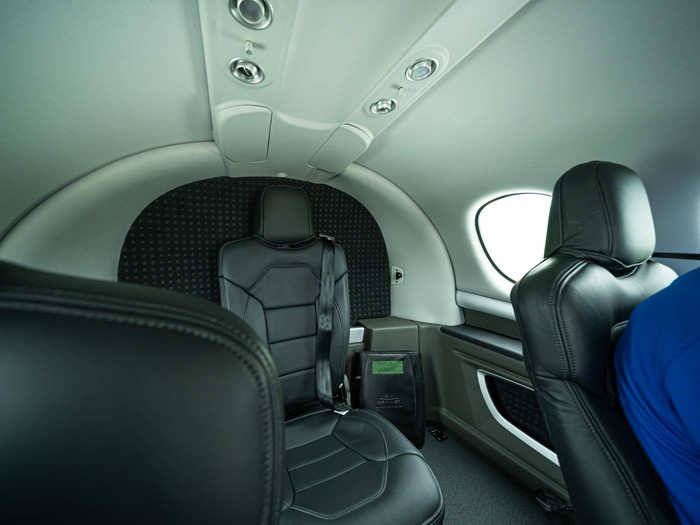
It really is a small plane, with a wingspan of 38.7 feet. It's 30.7 feet long and 10.9 feet tall.
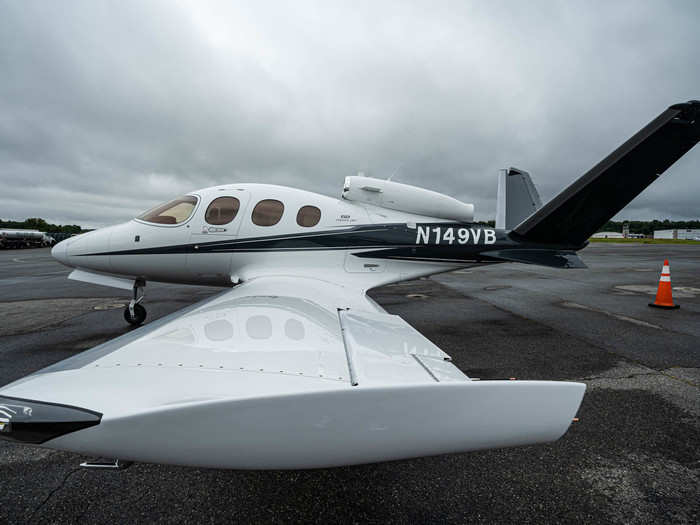
The plane has an uncommon V-shaped tail ...
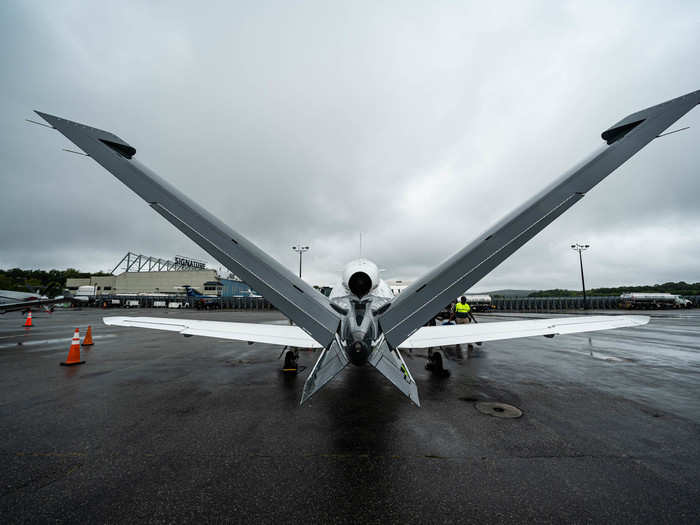
... And a single engine, mounted on the roof. It's a Williams International FJ33-5A turbofan. The jet nozzle is angled slightly upward so that it doesn't blast the rear fuselage with hot air.
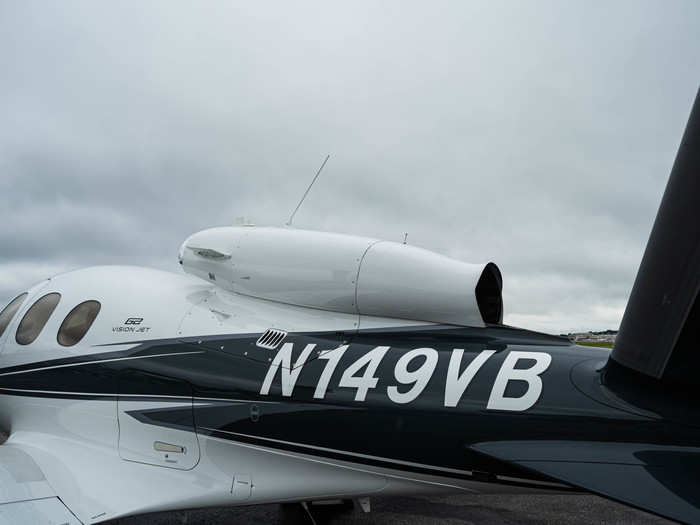
As with all Cirrus aircraft, it's designed with an emergency parachute system called CAPS. In the Vision Jet, the parachute is located in the nose.
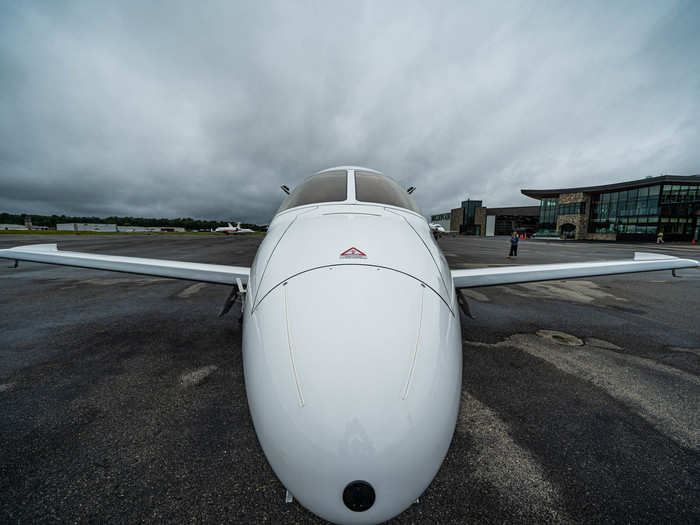
The Vision Jet's fuselage is actually made of carbon fiber instead of aluminum. Carbon fiber is lighter and stronger than aluminum construction.
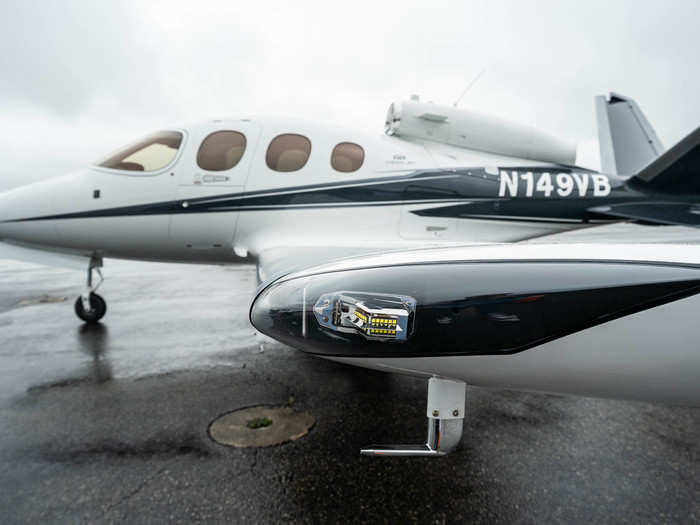
Thanks to the minivan-like layout, the passengers and pilot occupy the same space.
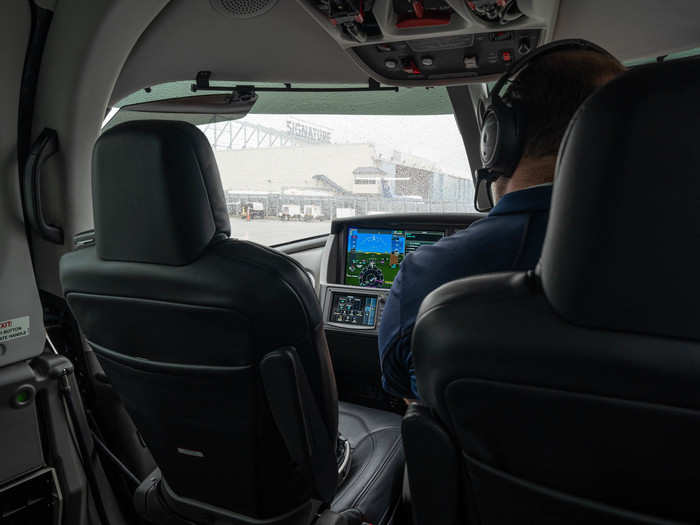
The Safe Return button is located on the ceiling in between the pilot and the first row of seats. If something happened to the pilot — like a medical emergency, the passengers can see right away and reach the button.
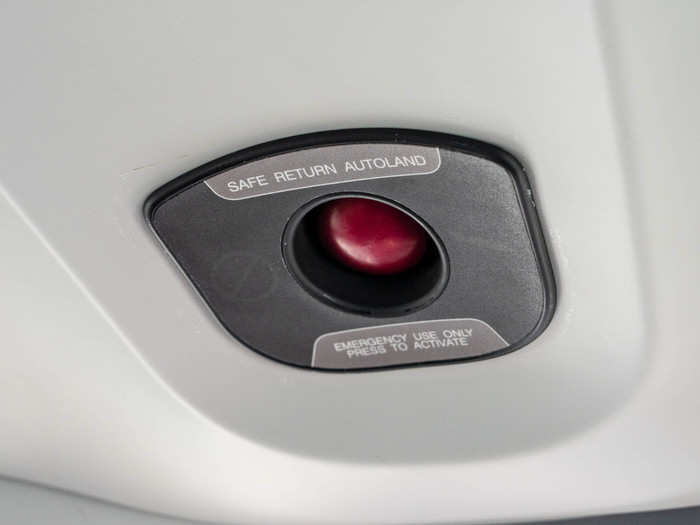
For the demonstration, we took off from Westchester Airport in the suburbs of New York City.
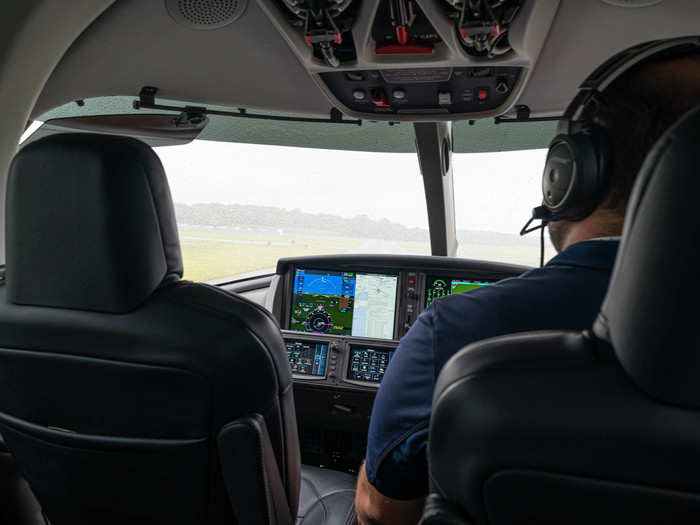
After a brief taxi to the runway ...
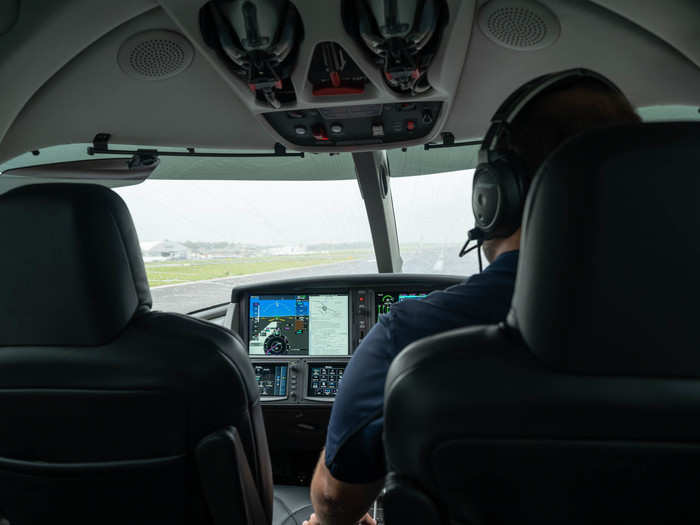
... We were cleared to take off. It's loud on board, so we wore Bose noise-cancelling headsets with microphones. The pilot set the radio so I could hear air-traffic control just like him.
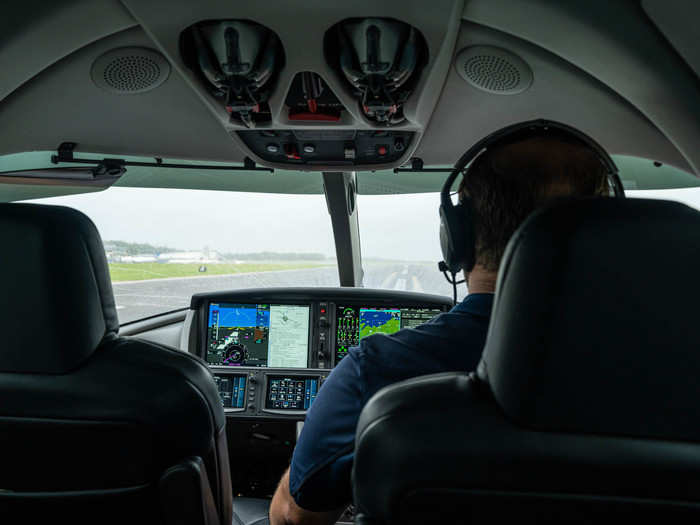
It was a rainy and stormy day, which made for a fun and bumpy ride the whole way.
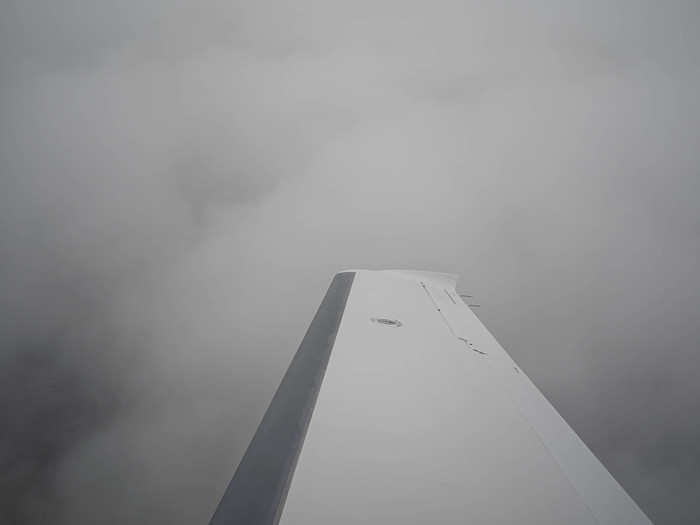
A few minutes later, we broke above the clouds. Autopilot was active by this point, flying the plane based on the pilots instructions and inputs.
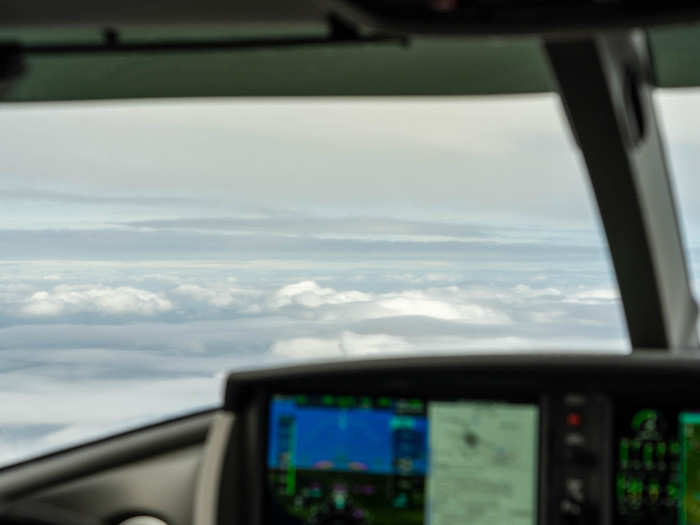
We flew and chatted for a few minutes (one of Cirrus' test pilots was also on board, seated next to me), as we headed toward Stewart Airport in Newburgh, a bit farther out from the city.

Then, I got ready to land the plane
Because it wasn't a real emergency, we did a few things differently.
For example, our pilot disabled the feature that communicates with air traffic control, since we didn't want to send out a false emergency broadcast. Also, because we didn't want to interfere with normal air traffic, we waited to push the button until we were in a scenario where it was obvious which airport, runway, and direction the auto-land system would choose.
But other than that, this was, the system behaved exactly as it was designed to.
As we got into position ...
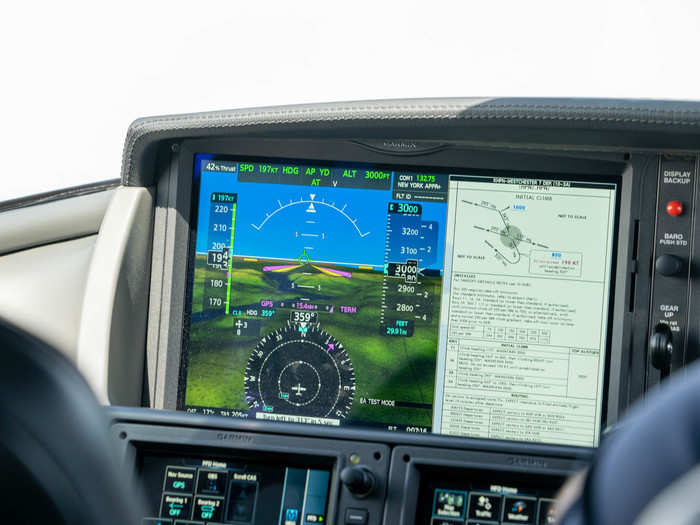
... Our pilot sat back ...
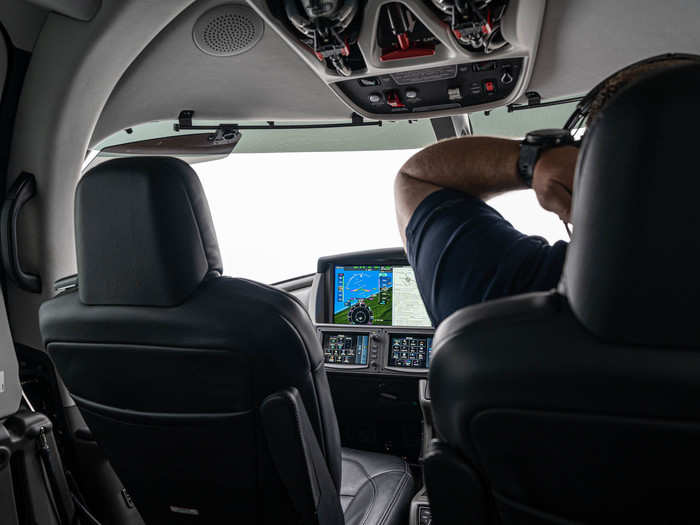
... And I pushed the button.
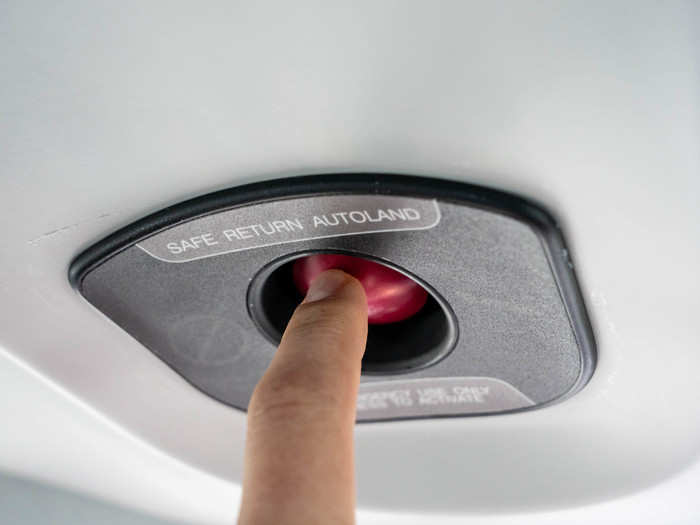
If someone pushes the button by mistake, the pilot has a few seconds to prevent the auto-land feature from kicking in. They can also cancel it at any point before landing.
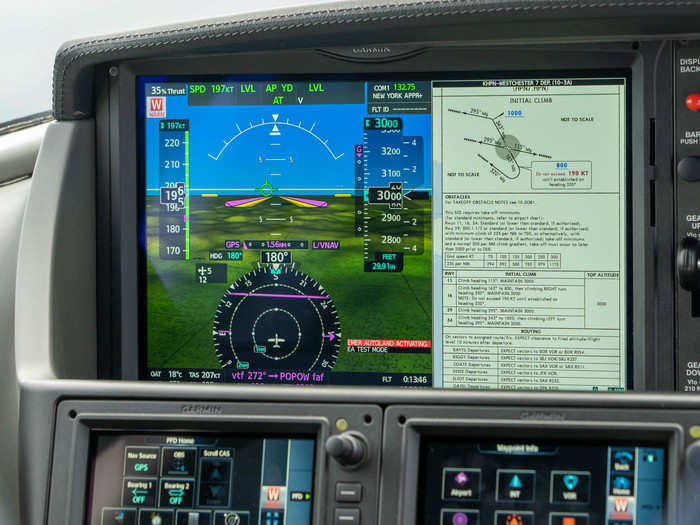
Then, the Safe Return system takes over.
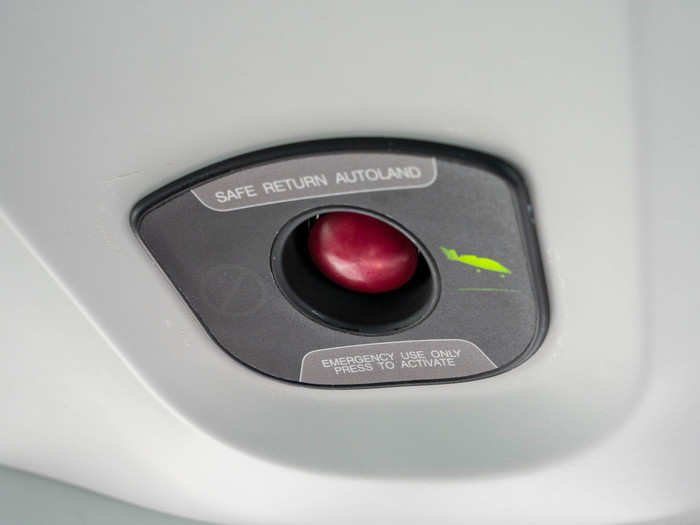
From this point on, the aircraft is being flown by Garmin's system. After it chooses the airport and plots the route ...
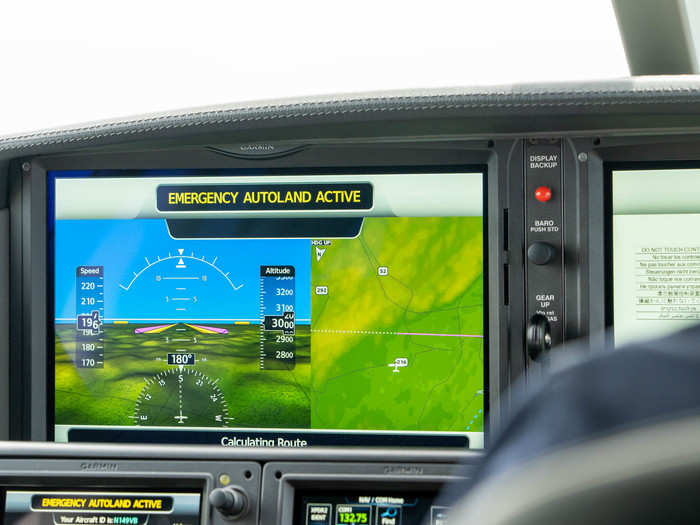
... It starts to navigate, while broadcasting a pre-programmed message over the relevant air-traffic control frequency, based on location and airport. The message warns other pilots, too, who know to provide clearance for the plane.
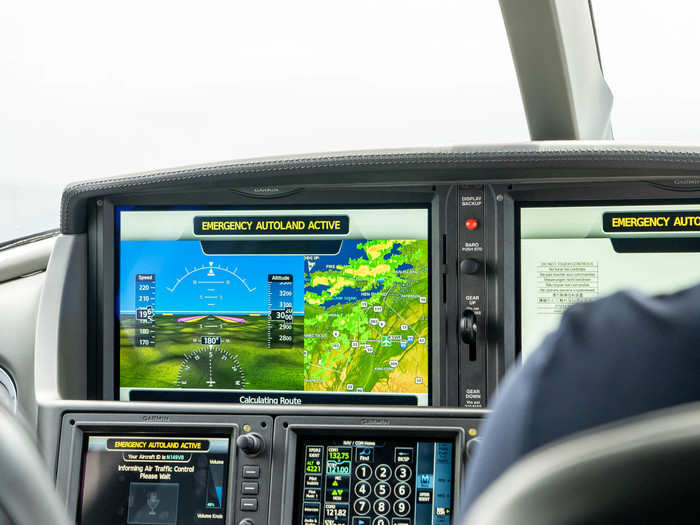
Passengers can also override the automated broadcast to speak with air-traffic control directly.

The system also sets the plane's transponder to broadcast a distress signal.
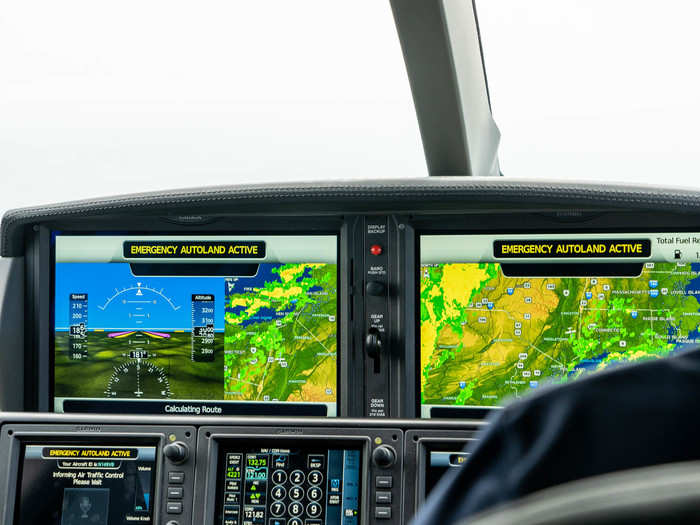
Our pilot is monitoring and chatting with air-traffic control right now, since the radio feature of Safe Return has been disabled for this demo.

The screens offer a ton of information so that the anxious passengers who may not otherwise know how to read the avionics screens can understand when to expect turns or descents. They're also given an ETA for landing.
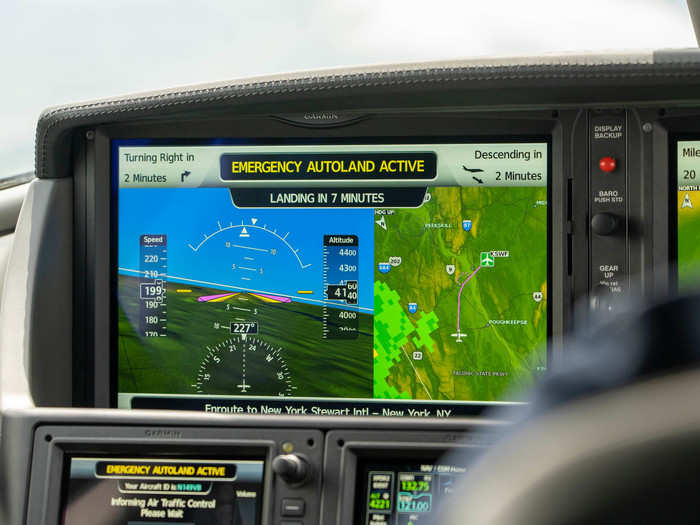
There are also instructions for anything the passengers may need to do, like buckling their seat belts.
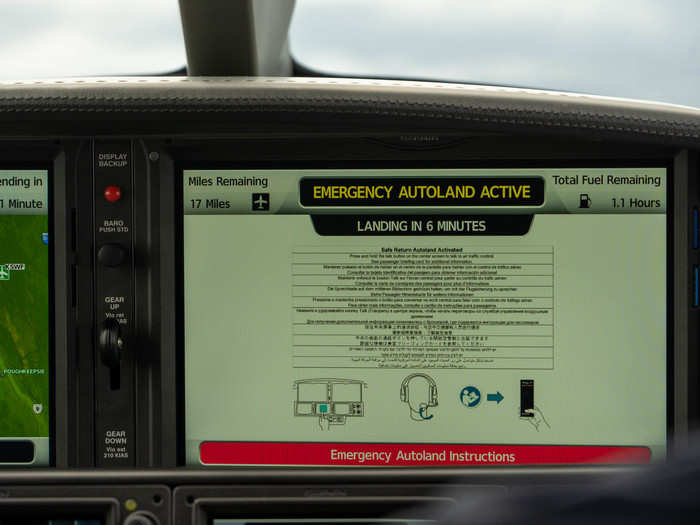
Here the plane is automatically getting into position for its final approach.
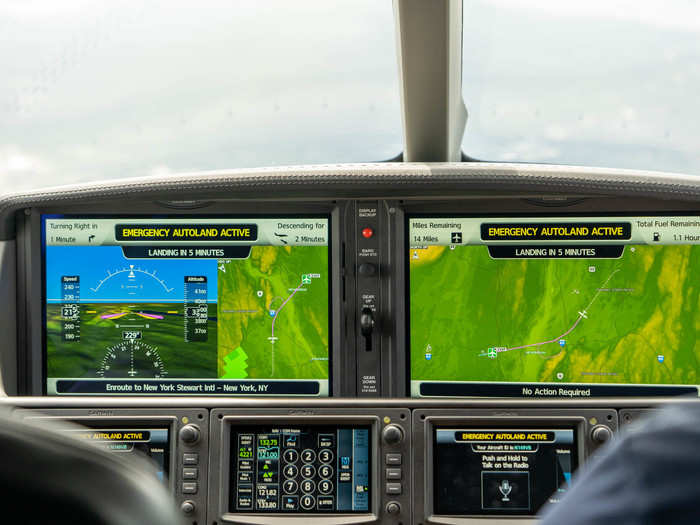
It's been almost 10 minutes since I pushed the Safe Return button, but we're in position and lined up with the runway ...
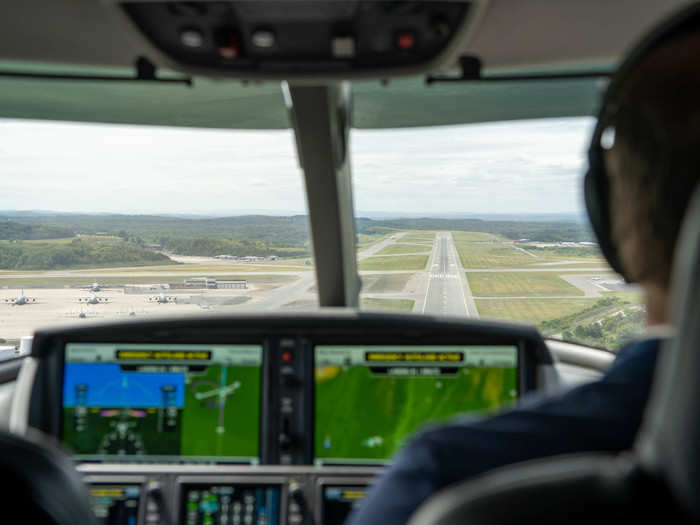
After a gentle descent ...
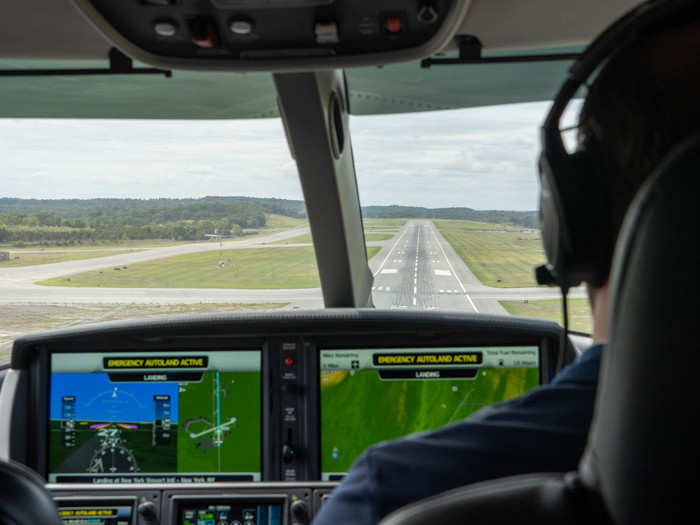
... We lined up ...
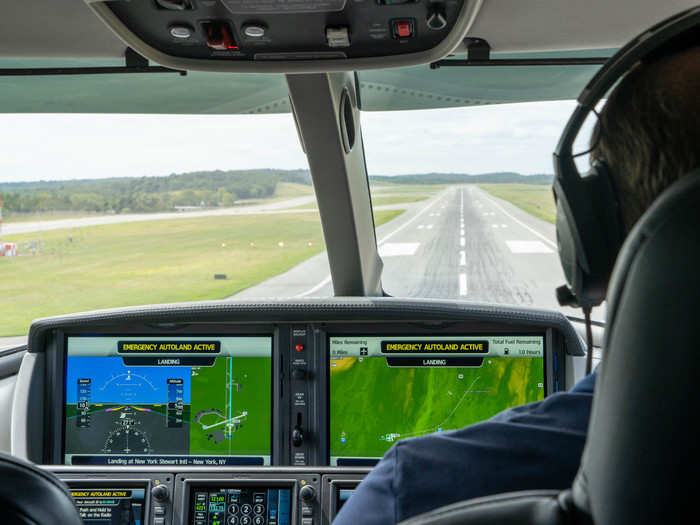
... And landed. If I didn't know any better, I'd have assumed it was a normal landing.
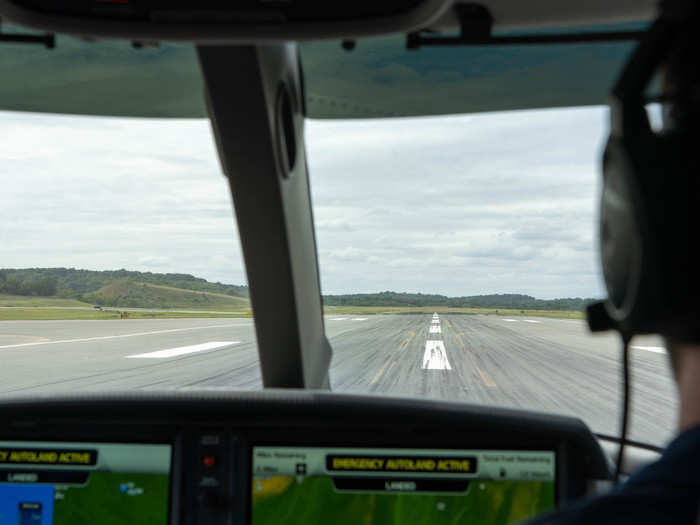
We took off again pretty much right away and flew back to Westchester. This time, the pilot landed.
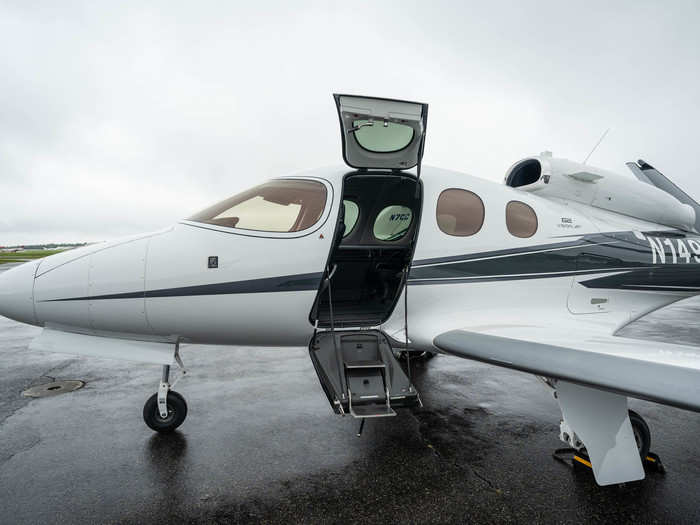
Cirrus and Garmin make clear that Safe Return is only for emergencies. It's not meant to help pilots with landings they may find tricky, or to help them land in conditions that they aren't certified to fly in under normal circumstances.

Safe Return will also be available on Piper planes that use Garmin's G3000 avionics system, as well as future planes designed to accommodate it.
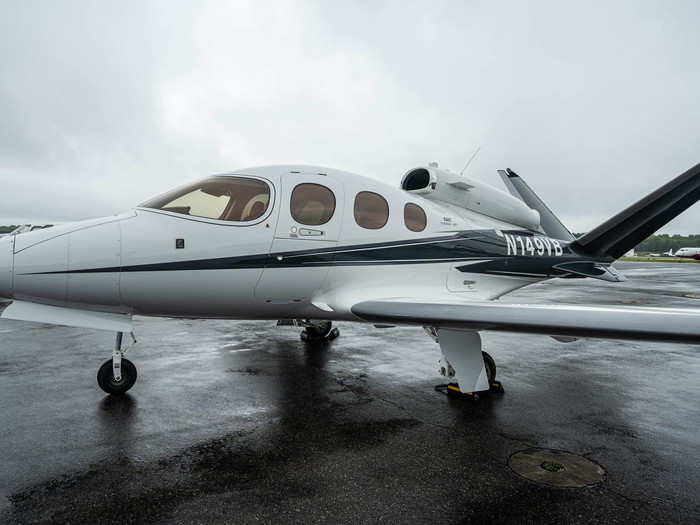
Popular Right Now
Popular Keywords
Advertisement